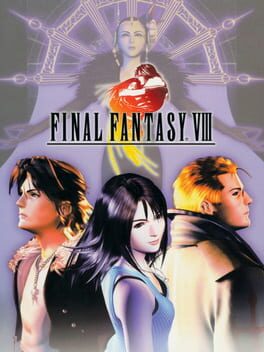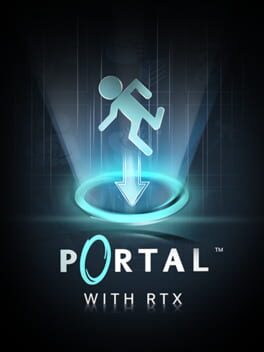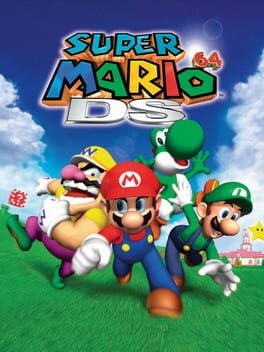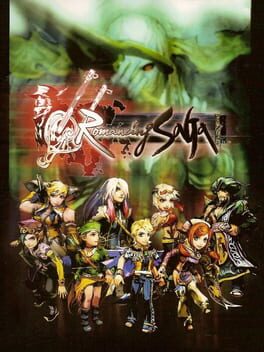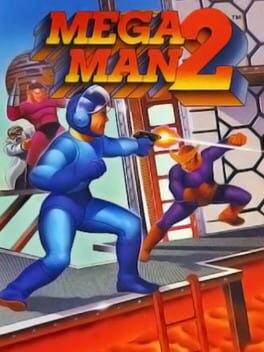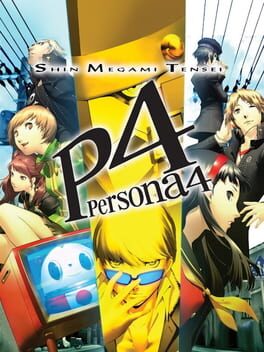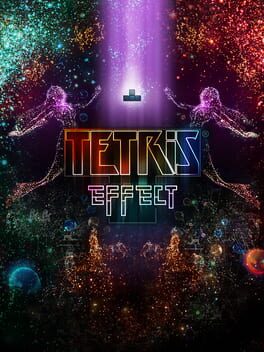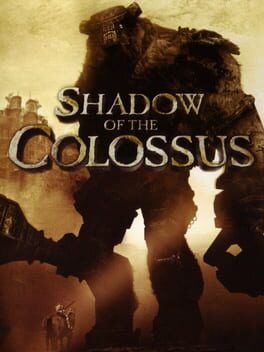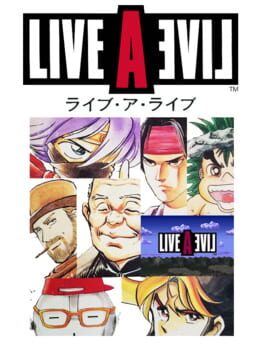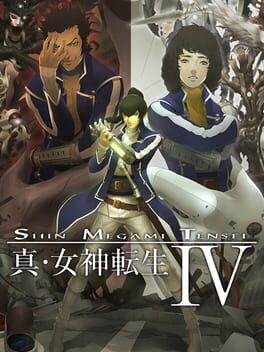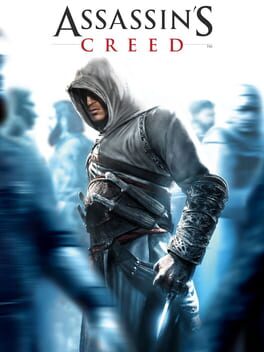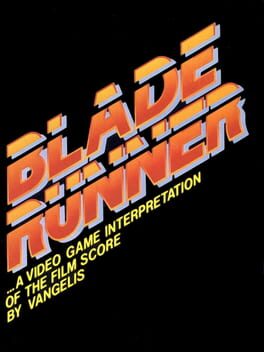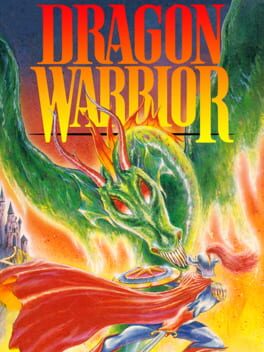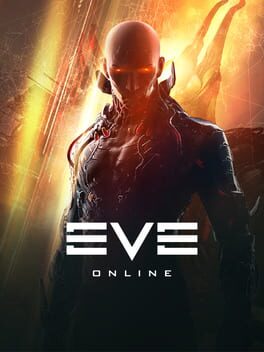StewpendousMan
98 reviews liked by StewpendousMan
Cyberpunk 2077
2020
Where were you when cyberpunk became escapism?
Look around discussions of Cyberpunk 2077 and keep track of how long it takes before someone says that they wish they could live in Night City. Watch these conversations as they turn to screenshots of scenic views and vistas, with all involved waxing poetic about getting lost in the world. See the rising glut of "comfy" cyberpunk games — DYSTOPIKA, Skid Cities, Nivalis — and remember the genre's origins, written in blood and broken teeth from beneath the heel of a corporate boot. Cyberpunk has not been a genre where hope exists. It has not been a place for people to want to be. Cyberpunk media is a warning more than anything else. Despite this, more people than ever don't just see places like Night City as an acceptable alternative, but as something to yearn for. What they have now pales to what the genre's founders threatened would come to be. It isn't difficult to understand; I spent four years in Toronto, and that city has been a fucking shithole longer than I've been alive. This is a common opinion for extant cities and towns all around the globe. But what once existed as the worst-case scenario of a dark future has since emerged as more favorable to the world we occupy today.
There's an honesty to cyberpunk media that isn't there for much else. To pull an idea from Fighting in the Age of Loneliness, our world doesn't make sense. It's all abstraction. There are no roots, no sensible causes, just an ideological superstructure over everything that never seems to be shaped by its base despite all theory suggesting that it must. The bank owns a home owned by a landlord whose mortgage you pay. Your work is dictated by a boss who is dictated by a stock market which is dictated by investors, all so far removed from what you do that they couldn't ever comprehend it, yet they remain in charge of shaping it. Your country sends locals to other countries to kill other locals and nothing ever seems to come of it besides more people being dead sooner than they would have been otherwise. Cyberpunk media offers an escape from the absurd; it puts a gun in your hand and tells you to go and blow someone's fucking head off. The cops won't stop you, you'll get paid to do it, people will celebrate you. It's brutal, and barbaric, and it'll eventually leave you with more lead in your body than blood, but it's honest. It makes sense. There's no abstraction. There's you, there's a gun, there's a computer, there's a target, there's a legend. If it doesn't change much, it'll feel good to do it. Adventurism can't even promise you that in real life.
The greatest triumph of Cyberpunk 2077 is almost inarguably in its world design, doubtless thanks to the many decades of effort put in by creator Mike Pondsmith. Whether or not CDPR did a great job in translating all of that background lore into gameplay — in empty, clean streets, packed with inaccessible buildings and linear pathways — the design of everything borders on flawless. Night City is an urban planning nightmare, all twisted highways and too-dense housing. Drive a few miles out of town, though, and it starts looking like LA suburbs; drive a bit further than that, and you hit desert. While this alone is nothing new — Grand Theft Auto 5’s Los Santos is effectively the same thing — I feel that this is pretty rare for a lot of cyberpunk media, especially in the ones that break into the mainstream. People online will talk about that “eating noodles while wearing a trenchcoat in the rain” joke a lot when it comes to their ideal cyberpunk setting, but really take a second to think about how painfully generic cyberpunk media tends to be. Everyone wears stupid clothes, lives in permanently-raining cities with neon lights running 24/7, they all listen to nothing but darksynth, they’re all either corporate goosesteppers or chromed-out hackermen. People in cyberpunk settings are almost universally treated as set dressing, as indistinct and universal as the fucking wind. There’s some real diversity to both Night City and to the people that make it up, and it goes a long, long way in making it feel like a possible outcome for the real world rather than yet another piece of computer-anarchist wish fulfillment.
The characters themselves play a large part in why players seem so desperate to live here. Night City, as presented here, is kind of just filled with decent people. Now, we can’t talk about 2077 without talking about the Edgerunners anime, so I’ll be brief. What people liked about Edgerunners, I hope, is that it did a good job of establishing how someone can slip into a street gang. Not just a cyberpunk-themed one, but in general. David’s life fucking sucks from minute one, and it doesn’t stop sucking until the day he dies. His life is dog-eared by the deaths or betrayals or both of just about every person he’s ever cared about. He starts out with no money, no opportunities, and no future. Finding his crew is a release from that, but it’s short, and it’s painful. V, by contrast, has been born with a silver spoon in their mouth. The most stark difference you’ll notice happens right at the beginning, when Viktor Vektor gives you a free 21,000 eddies worth of cyberware that you never have to pay back. This is a strong line to draw between the two works. 2077’s Night City is nice, and forgiving. Edgerunners’s Night City will swallow you whole. It makes it really kind of difficult to believe that this is such a terrible world to occupy when V never really struggles for much, due in no small part to how strong of a support structure they both start out with and discover as the game goes on.
While nowhere near as cutthroat as they perhaps ought to be, considering that the way they act runs counter to how bad you’re told the setting is, 2077 has a strong supporting cast. What helps is that most of them are flawed in fairly believable ways: Judy is an idealist in a situation where it won’t work; Panam is so emotionally stunted that nearly every conversation she has ends with her blowing up on the other party; Jackie doesn’t know when to quit; River is here. Everyone’s favorite wholesome chungus Keanu Reeves is here as Johnny Silverhand, too, and he does a good enough job playing his character that you might forget that Silverhand is supposed to look like Bowie. Something I really do love about Silverhand is that it would have been so easy to make him fall on one extreme or the other — always right or always wrong — but he straddles that line exceptionally well. Johnny spends most of the game as an insufferable asshole, but when he’s right about something, he’s very right about it. By contrast, there’s a lot of time spent on him being wrong, and there’s really nothing to ought to say to him beyond telling him to go fuck himself. It’s a nice balance, and one that CDPR couldn’t keep up through Phantom Liberty, but that’s a review for another time.
The writing, broadly speaking, is good. I think a lot of the best stuff gets tucked away in the side jobs where you can actually dig into who these characters are and what they’re about, rather than just using them as a point of contact to get more “go here and kill a guy” missions from. I’m not completely sold on this being a masterpiece once you start poking away at specific details; I remain very surprised by people who both got attached to Jackie and then were surprised to see him die. The guy is throwing death flags from the very first mission. “Mama Welles is worried about me because all of her other sons died doing exactly what I’m doing, but it’s okay, because I’m never going to die. I love being alive. Hey, bartender who works at the place where they name drinks after dead people, here’s what my drink would be.” It doesn’t help that CDPR apparently ran out of time and money and stuffed the majority of Jackie’s character development and V’s start in Night City into a montage. I don’t know for certain how much it would have helped, but I have to imagine that Jackie’s death might have hit a bit harder if the guy wasn’t gone after a grand total of two gigs.
V lives a remarkably untragic life when you really zoom out. Aside from Jackie’s death, basically everyone that V knows or cares about either continues living their lives just fine or straight up moves out of Night City to go someplace else. Evelyn’s suicide is barely felt because she’s barely known, a couple of Aldecados can bite it, some dolls die in a Tyger Claws raid, and that’s about it. When you see how easy it is for Judy to leave Night City, for Panam to leave Night City, for V to leave Night City, for River to go on the run, for Kerry to go on tour — it makes you wonder why the fuck anyone actually stays in Night City. It doesn’t really seem that hard to just bounce. Of course, this is where something like the core books or Edgerunners come in to demonstrate why people can’t leave, so I’d say CDPR just did kind of a bad job in conveying this.
2077 does manage to be a decent immersive sim released in the year 2020, and that’s something of a feat. While some missions are incredible railroads that essentially force you down a set of tight hallways, there are significantly more of them that allow for quite a bit of player expression. Far from your usual dichotomy of “guns blazing” or “rear-naked choke fanatic” — though that certainly still exists here — 2077 likes to play around with the idea of your skills allowing you to break a mission in half. These are usually relegated to your mobility options, as most characters can walk out of the first couple hours of the game with a double jump and an airdash that’ll allow them to soar like a majestic, sequence-breaking eagle. It’s like a more limited Cruelty Squad, as the closest comparison; there’s no gunk booster jetpacks or intestine grappling hooks, but you can instead kill people with your brain or get Gorilla Arms to punch them in half as a trade-off. These are what you should be prioritizing when it comes to killing people, because firing guns feels pretty bad. The best thing you can do with regards to firearms is get the biggest shotgun you can find and stuff it in someone’s chest, or get smart guns that don’t require you to aim. Peering down your sights and taking potshots at approaching enemies from anything more than ten meters may as well just subtract the ammo from your gun without all of the sound effects and visual flair that would suggest it would ever do anything. Of course, this is all moot when you consider that the most optimal and most fun way to play this is to activate your berserk implant and just smash everyone’s face in with a baseball bat like you’re the Babe Ruth of the dark future.
It’s still kind of a buggy piece of shit. I do like 2077, but this is not the absolute slam-dunk comeback that it’s been hailed as. Granted, it’s certainly a lot better now than it was — back when it was so bad that Sony pulled it from digital storefronts and issued no-questions-asked refunds — but you don’t get points for getting your game to day-one launch stability three years after you released it. The opening nomad lifepath at one point flung me a kilometer in the opposite direction from my car for seemingly no reason, and I had to walk all the way back to it. This is in the introduction mission, before you’ve done anything. This is not the point where things should be breaking yet.
More and more of these bugs will continue to rear their ugly heads the further into the game you get and the more things 2077 needs to keep track of, and it’s clear that it’s a juggler with too many balls. Cops stopped spawning entirely at one point, allowing me to massacre civilians with no penalty; calls for new missions stopped coming in, so I couldn’t progress the side stories; the game engine would forget a fundamental law of reality and drop me through the map, or launch me hundreds of feet into the air, or make it so my guns just wouldn’t fire when I pulled the trigger. These come infrequently, but popped up enough throughout my 25-hour playthrough to bother me. I’m playing this on a brand-new computer off of an M.2 drive and V’s dick is still out whenever he gets on a motorcycle for a few seconds before his clothes load in. Something’s fucked up behind the curtain.
2077 is good, but given how much of a moment it was intended to be, it falls more than a little flat. CDPR still made a fucking gajillion dollars before it even released, so it isn’t as if they’re going to learn anything from this. As The Witcher 3, as Cyberpunk 2077, so The Witcher 4. Expect their next title to also be a barely-working mess that takes years to patch to an acceptable state. This is good, but it’s only good. It's a lot of missed opportunities rolled into a single work.
In Night City, you can be cum.
Look around discussions of Cyberpunk 2077 and keep track of how long it takes before someone says that they wish they could live in Night City. Watch these conversations as they turn to screenshots of scenic views and vistas, with all involved waxing poetic about getting lost in the world. See the rising glut of "comfy" cyberpunk games — DYSTOPIKA, Skid Cities, Nivalis — and remember the genre's origins, written in blood and broken teeth from beneath the heel of a corporate boot. Cyberpunk has not been a genre where hope exists. It has not been a place for people to want to be. Cyberpunk media is a warning more than anything else. Despite this, more people than ever don't just see places like Night City as an acceptable alternative, but as something to yearn for. What they have now pales to what the genre's founders threatened would come to be. It isn't difficult to understand; I spent four years in Toronto, and that city has been a fucking shithole longer than I've been alive. This is a common opinion for extant cities and towns all around the globe. But what once existed as the worst-case scenario of a dark future has since emerged as more favorable to the world we occupy today.
There's an honesty to cyberpunk media that isn't there for much else. To pull an idea from Fighting in the Age of Loneliness, our world doesn't make sense. It's all abstraction. There are no roots, no sensible causes, just an ideological superstructure over everything that never seems to be shaped by its base despite all theory suggesting that it must. The bank owns a home owned by a landlord whose mortgage you pay. Your work is dictated by a boss who is dictated by a stock market which is dictated by investors, all so far removed from what you do that they couldn't ever comprehend it, yet they remain in charge of shaping it. Your country sends locals to other countries to kill other locals and nothing ever seems to come of it besides more people being dead sooner than they would have been otherwise. Cyberpunk media offers an escape from the absurd; it puts a gun in your hand and tells you to go and blow someone's fucking head off. The cops won't stop you, you'll get paid to do it, people will celebrate you. It's brutal, and barbaric, and it'll eventually leave you with more lead in your body than blood, but it's honest. It makes sense. There's no abstraction. There's you, there's a gun, there's a computer, there's a target, there's a legend. If it doesn't change much, it'll feel good to do it. Adventurism can't even promise you that in real life.
The greatest triumph of Cyberpunk 2077 is almost inarguably in its world design, doubtless thanks to the many decades of effort put in by creator Mike Pondsmith. Whether or not CDPR did a great job in translating all of that background lore into gameplay — in empty, clean streets, packed with inaccessible buildings and linear pathways — the design of everything borders on flawless. Night City is an urban planning nightmare, all twisted highways and too-dense housing. Drive a few miles out of town, though, and it starts looking like LA suburbs; drive a bit further than that, and you hit desert. While this alone is nothing new — Grand Theft Auto 5’s Los Santos is effectively the same thing — I feel that this is pretty rare for a lot of cyberpunk media, especially in the ones that break into the mainstream. People online will talk about that “eating noodles while wearing a trenchcoat in the rain” joke a lot when it comes to their ideal cyberpunk setting, but really take a second to think about how painfully generic cyberpunk media tends to be. Everyone wears stupid clothes, lives in permanently-raining cities with neon lights running 24/7, they all listen to nothing but darksynth, they’re all either corporate goosesteppers or chromed-out hackermen. People in cyberpunk settings are almost universally treated as set dressing, as indistinct and universal as the fucking wind. There’s some real diversity to both Night City and to the people that make it up, and it goes a long, long way in making it feel like a possible outcome for the real world rather than yet another piece of computer-anarchist wish fulfillment.
The characters themselves play a large part in why players seem so desperate to live here. Night City, as presented here, is kind of just filled with decent people. Now, we can’t talk about 2077 without talking about the Edgerunners anime, so I’ll be brief. What people liked about Edgerunners, I hope, is that it did a good job of establishing how someone can slip into a street gang. Not just a cyberpunk-themed one, but in general. David’s life fucking sucks from minute one, and it doesn’t stop sucking until the day he dies. His life is dog-eared by the deaths or betrayals or both of just about every person he’s ever cared about. He starts out with no money, no opportunities, and no future. Finding his crew is a release from that, but it’s short, and it’s painful. V, by contrast, has been born with a silver spoon in their mouth. The most stark difference you’ll notice happens right at the beginning, when Viktor Vektor gives you a free 21,000 eddies worth of cyberware that you never have to pay back. This is a strong line to draw between the two works. 2077’s Night City is nice, and forgiving. Edgerunners’s Night City will swallow you whole. It makes it really kind of difficult to believe that this is such a terrible world to occupy when V never really struggles for much, due in no small part to how strong of a support structure they both start out with and discover as the game goes on.
While nowhere near as cutthroat as they perhaps ought to be, considering that the way they act runs counter to how bad you’re told the setting is, 2077 has a strong supporting cast. What helps is that most of them are flawed in fairly believable ways: Judy is an idealist in a situation where it won’t work; Panam is so emotionally stunted that nearly every conversation she has ends with her blowing up on the other party; Jackie doesn’t know when to quit; River is here. Everyone’s favorite wholesome chungus Keanu Reeves is here as Johnny Silverhand, too, and he does a good enough job playing his character that you might forget that Silverhand is supposed to look like Bowie. Something I really do love about Silverhand is that it would have been so easy to make him fall on one extreme or the other — always right or always wrong — but he straddles that line exceptionally well. Johnny spends most of the game as an insufferable asshole, but when he’s right about something, he’s very right about it. By contrast, there’s a lot of time spent on him being wrong, and there’s really nothing to ought to say to him beyond telling him to go fuck himself. It’s a nice balance, and one that CDPR couldn’t keep up through Phantom Liberty, but that’s a review for another time.
The writing, broadly speaking, is good. I think a lot of the best stuff gets tucked away in the side jobs where you can actually dig into who these characters are and what they’re about, rather than just using them as a point of contact to get more “go here and kill a guy” missions from. I’m not completely sold on this being a masterpiece once you start poking away at specific details; I remain very surprised by people who both got attached to Jackie and then were surprised to see him die. The guy is throwing death flags from the very first mission. “Mama Welles is worried about me because all of her other sons died doing exactly what I’m doing, but it’s okay, because I’m never going to die. I love being alive. Hey, bartender who works at the place where they name drinks after dead people, here’s what my drink would be.” It doesn’t help that CDPR apparently ran out of time and money and stuffed the majority of Jackie’s character development and V’s start in Night City into a montage. I don’t know for certain how much it would have helped, but I have to imagine that Jackie’s death might have hit a bit harder if the guy wasn’t gone after a grand total of two gigs.
V lives a remarkably untragic life when you really zoom out. Aside from Jackie’s death, basically everyone that V knows or cares about either continues living their lives just fine or straight up moves out of Night City to go someplace else. Evelyn’s suicide is barely felt because she’s barely known, a couple of Aldecados can bite it, some dolls die in a Tyger Claws raid, and that’s about it. When you see how easy it is for Judy to leave Night City, for Panam to leave Night City, for V to leave Night City, for River to go on the run, for Kerry to go on tour — it makes you wonder why the fuck anyone actually stays in Night City. It doesn’t really seem that hard to just bounce. Of course, this is where something like the core books or Edgerunners come in to demonstrate why people can’t leave, so I’d say CDPR just did kind of a bad job in conveying this.
2077 does manage to be a decent immersive sim released in the year 2020, and that’s something of a feat. While some missions are incredible railroads that essentially force you down a set of tight hallways, there are significantly more of them that allow for quite a bit of player expression. Far from your usual dichotomy of “guns blazing” or “rear-naked choke fanatic” — though that certainly still exists here — 2077 likes to play around with the idea of your skills allowing you to break a mission in half. These are usually relegated to your mobility options, as most characters can walk out of the first couple hours of the game with a double jump and an airdash that’ll allow them to soar like a majestic, sequence-breaking eagle. It’s like a more limited Cruelty Squad, as the closest comparison; there’s no gunk booster jetpacks or intestine grappling hooks, but you can instead kill people with your brain or get Gorilla Arms to punch them in half as a trade-off. These are what you should be prioritizing when it comes to killing people, because firing guns feels pretty bad. The best thing you can do with regards to firearms is get the biggest shotgun you can find and stuff it in someone’s chest, or get smart guns that don’t require you to aim. Peering down your sights and taking potshots at approaching enemies from anything more than ten meters may as well just subtract the ammo from your gun without all of the sound effects and visual flair that would suggest it would ever do anything. Of course, this is all moot when you consider that the most optimal and most fun way to play this is to activate your berserk implant and just smash everyone’s face in with a baseball bat like you’re the Babe Ruth of the dark future.
It’s still kind of a buggy piece of shit. I do like 2077, but this is not the absolute slam-dunk comeback that it’s been hailed as. Granted, it’s certainly a lot better now than it was — back when it was so bad that Sony pulled it from digital storefronts and issued no-questions-asked refunds — but you don’t get points for getting your game to day-one launch stability three years after you released it. The opening nomad lifepath at one point flung me a kilometer in the opposite direction from my car for seemingly no reason, and I had to walk all the way back to it. This is in the introduction mission, before you’ve done anything. This is not the point where things should be breaking yet.
More and more of these bugs will continue to rear their ugly heads the further into the game you get and the more things 2077 needs to keep track of, and it’s clear that it’s a juggler with too many balls. Cops stopped spawning entirely at one point, allowing me to massacre civilians with no penalty; calls for new missions stopped coming in, so I couldn’t progress the side stories; the game engine would forget a fundamental law of reality and drop me through the map, or launch me hundreds of feet into the air, or make it so my guns just wouldn’t fire when I pulled the trigger. These come infrequently, but popped up enough throughout my 25-hour playthrough to bother me. I’m playing this on a brand-new computer off of an M.2 drive and V’s dick is still out whenever he gets on a motorcycle for a few seconds before his clothes load in. Something’s fucked up behind the curtain.
2077 is good, but given how much of a moment it was intended to be, it falls more than a little flat. CDPR still made a fucking gajillion dollars before it even released, so it isn’t as if they’re going to learn anything from this. As The Witcher 3, as Cyberpunk 2077, so The Witcher 4. Expect their next title to also be a barely-working mess that takes years to patch to an acceptable state. This is good, but it’s only good. It's a lot of missed opportunities rolled into a single work.
In Night City, you can be cum.
Final Fantasy VIII
1999
I can barely form a coherent thought about what I just finished but I feel weirdly seen by Final Fantasy VIII and its protagonist in particular as this understanding of specific feelings of capitalist alienation that I've been unable to articulate for the longest time. I don't have any official diagnosis and especially do not want people I barely know armchair diagnosing me online but Squall's struggles to process the most basic social interactions in terms of anything other than capitalist obligations like school or work, "shut up and get the job done" mentality, and specific jaded outlook are core parts of myself I never expected to see reflected in this fashion. While I narrowly prefer the basic bitch choices of VI and VII in terms of Final Fantasy games, this surreal response to the cultural zeitgeist of the latter game and weird as fuck (complimentary) use of Marxist theory (specifically the "annihilation of space by time" described in Grundrisse and expanded upon over a century later by David Harvey) in the same way that most RPGs use religious/mythological concepts solely because it sounds cool is a game that will no doubt have a special place in my heart from now on.
Portal with RTX
2022
STOP DOING HYPER REALISM
VIDEO GAMES WERE NOT SUPPOSED TO BE REAL LIFE
YEARS OF SO CALLED TECHNOLOGICAL ADVANCEMENT YET NO REAL WORLD USE FOUND IN MAKING A GAME HAVE MORE REALISTIC VISUAL AESTHETICS THAN METAL GEAR SOLID 4
Wanted to look better anyway for a laugh? We had a tool for that, it was called "ART DIRECTION"
"Yes give me SLIGHTLY more smudges on that brown stained floor, give me slightly more lighting that completely destroys the art style at the cost of taking HALF A YEAR from my graphics card's life expectancy." - statements dreamed up by the utterly deranged.
Look at what NVidia and it's mafia of bitcoin miners have been demanding your money all this time, with all the decades worth of beautiful low spec games in your backlog.
???????????
"Hello I would like my games to run and look worse please"
They have played us for absolute fools.
VIDEO GAMES WERE NOT SUPPOSED TO BE REAL LIFE
YEARS OF SO CALLED TECHNOLOGICAL ADVANCEMENT YET NO REAL WORLD USE FOUND IN MAKING A GAME HAVE MORE REALISTIC VISUAL AESTHETICS THAN METAL GEAR SOLID 4
Wanted to look better anyway for a laugh? We had a tool for that, it was called "ART DIRECTION"
"Yes give me SLIGHTLY more smudges on that brown stained floor, give me slightly more lighting that completely destroys the art style at the cost of taking HALF A YEAR from my graphics card's life expectancy." - statements dreamed up by the utterly deranged.
Look at what NVidia and it's mafia of bitcoin miners have been demanding your money all this time, with all the decades worth of beautiful low spec games in your backlog.
???????????
"Hello I would like my games to run and look worse please"
They have played us for absolute fools.
Super Mario 64 DS
2004
nintendo salvaging the american gaming market with the release of the NES was the modern inflection point for our industry, in some ways that are less obvious than others. the console enshrined gaming as a medium with legitimacy beyond the original fad-like relevance of the atari VCS, but the centralization of this success around nintendo gave the company an uncomfortable amount of leverage. this immediately portended poorly with the simultaneous release of the console's killer app: super mario bros., which gestured to a sinister rejection of the console's original intent. look to the japanese launch line-up and you'll see arcade staples such as donkey kong and popeye; games that lauded precise, restricted play with definitive rules and short runtimes. super mario bros. was a refutation of this design philosophy in favor of the loosey-goosey variable jump heights, frequent health restoration items, and long hallways of copy-paste content replacing the tightly paced experiences that defined the era before. the NES still featured arguably the greatest console expressions of the rigorous arcade action experiences that defined the '80s - castlevania, ninja gaiden, and the early mega mans all come to mind - but the seeds super mario bros. planted would presage a shift into more and more experiences that coddled the player rather than testing their fortitude. in some ways, super mario bros. lit the match that would leave our gaming landscape in the smoldering ruins of the AAA design philosophy.
the '90s only deepened nintendo's exploration of trends that would further attempt to curb the arcade philosophy, which still floated on thanks to the valiant efforts of their competitors at sega, capcom, konami, and others. super mario world kicked off nintendo's 16-bit era with an explicitly non-linear world map that favored the illusion of charting unknown lands over the concrete reality of learning play fundamentals, and its pseudo-sequel yoshi's island would further de-emphasize actual platforming chops by giving the player a generous hover and grading them on their ability to pixel hunt for collectables rather than play well, but the most stunning example of nintendo's decadence in this era is undoubtedly donkey kong '94. the original donkey kong had four levels tightly wound around a fixed jump arc and limited ability for mario to deal with obstacles; its ostensible "remake" shat all over its legacy by infusing mario's toolkit with such ridiculous pablum such as exaggerated flip jumps, handstands, and other such acrobatics. by this point nintendo was engaging in blatant historical revisionism, turning this cornerstone of the genre into a bug-eyed circus romp, stuffed with dozens of new puzzle-centric levels that completely jettisoned any semblance of toolkit-oriented level design from the original game. and yet, this was the final fissure before the dam fully burst in 1996.
with the release of the nintendo 64 came the death knell of the industry: the analog stick. nintendo's most cunning engineers and depraved designers had cooked up a new way to hand unprecedented control to the player and tear down all obstacles standing in the way of the paternalistic head-pat of a "job well done" that came with finishing a game. with it also came this demonic interloper's physical vessel, super mario 64; the refined, sneering coalescence of all of nintendo's design tendencies up to this point. see here a game with enormous, previously unfathomable player expression, with virtually every objective solvable in myriad different ways to accommodate those who refuse to engage with the essential challenges the game offers. too lazy to even attempt some challenges at all? feel free to skip over a third of the game's "star" objectives on your way to the final boss; you can almost see the designers snickering as they copy-pasted objectives left and right, knowing that the majority of their player base would never even catch them in the act due to their zombie-like waddle to the atrociously easy finish line. even as arcade games stood proud at the apex of the early 3D era, super mario 64 pulled the ground out underneath them, leaving millions of gamers flocking to similar experiences bereft of the true game design fundamentals that had existed since the origination of the medium.
this context is long but hopefully sobering to you, the reader, likely a gamer so inoculated by the drip-feed of modern AAA slop that you likely have regarded super mario 64 as a milestone in 3D design up to now. yet, it also serves as a stark contrast to super mario 64 ds, a revelation and admission of guilt by nintendo a decade after their donkey kong remake plunged modern platformers into oblivion.
the d-pad alone is cool water against the brow of one in the throes of a desert of permissive design techniques. tightening up the input space from the shallow dazzle of an analog surface to the limitations of eight directions instantly reframes the way one looks at the open environments of the original super mario 64. sure, there's a touch screen option, but the awkward translation of a stick to the literal flat surface of the screen seems to be intentionally hobbled in order to encourage use of the d-pad. while moving in a straight line may still be simple, any sort of other action now begets a pause for reflection over the exact way one should proceed. is the sharp 45 or 90 degree turn to one side "good enough", or will I need to make a camera adjustment in-place? for this bridge, what combination of angles should I concoct in order to work through this section? the removal of analog control also forces the addition of an extra button to differentiate between running and walking, slapping the player on the wrist if they try to gently segue between the two states as in the original. the precision rewards those who aim to learn their way around the rapid shifts in speed while punishing those who hope they can squeak by with the same sloppy handling that the original game allowed.
on its own this change is crucial, but it still doesn't cure the ills of the original's permissive objective structure. however, the remake wisely adds a new character selection system that subtly injects routing fundamentals into the game's core. for starters: each of the characters has a separate moveset, and while some characters such as yoshi and luigi regrettably have the floaty hover and scuttle that I disdained in yoshi's island, it's at least balanced here by removing other key aspects of their kit such as wall jumps and punches. the addition of wario gives the game a proper "hard mode," with wario's lumbering speed and poor jump characteristics putting much-needed limiters on the game's handling. for objectives that now explicitly require wario to complete, the game is effectively barring you from abusing the superior movement of the original game by forcing you into a much more limited toolkit with rigid d-pad controls, the kind of limitations this game absolutely needed in order to shine.
that last point about objectives that specifically require a given character is key: the remake segments its objectives based on which characters are viable to use to complete them. however, while in some cases the game may telegraph which specific characters are required for a particular task, in many cases the "correct" solution is actually to bounce between the characters in real time. this is done by strategically placing hats for each of the characters throughout the map - some attached to enemies and some free-floating - which allow the player to switch on the fly. this adds new detours to the otherwise simple objectives that vastly increases their complexity: which toolkit is best suited for which part of each mission? how should my route be planned around the level to accommodate hats I need to pick up? will I be able to defeat an enemy that's guarding the hat if I had to? this decision-making fleshes out what was previously a mindless experience.
there's one additional element to this system that truly elevates it to something resembling the arcade experiences of yore. while you can enter a level as any character, entering as yoshi allows you to preemptively don the cap of any other character as you spawn in, preventing the player from having to back-track to switch characters. on the surface this seems like another ill-advised QoL feature, but some subtle features reveal something more fascinating. yoshi has no cap associated with him, so to play as him, one must enter the level with him. however, you often need to switch to another character in the middle of a level. how do you switch back? by taking damage. to solve the ridiculously overstuffed eight piece health bar of the original, this remake transforms it into a resource you expend in order to undergo transformation. sure, one could theoretically collect coins in order to replenish this resource, but this adds a new layer onto the routing that simply didn't exist in the original game, where there were so many ways to circumvent obstacles with the permissive controls that getting hit in the first place was often harder than completing the objective. by reframing the way that the player looks at their heath gauge, the game is calling to mind classic beat 'em ups, where the health gauge often doubled as a resource to expend for powerful AoE supers.
the game still suffers from much of the rotten design at the core of its forebear; these above changes are phenomenal additions, but they're grafted onto a framework that's crumbling as you delve into it. regardless, the effort is admirable. for a brief moment, nintendo offered an apology to all of those hurt by their curbstomping of the design philosophies that springboarded them into juggernaut status in the first place, and they revitalized classic design perspectives for many millions more who first entered the world of gaming after it had already been tainted by nintendo's misdeeds. the galaxy duology, released a few years after this game, attempted to rework the series from the ground up with a new appreciation for arcade design by limiting the bloated toolkit of previous games and linearizing levels, but the damage had already been done. the modern switch era has magnified nintendo's worst tendencies, putting proper execution and mechanical comprehension to the wayside as they accelerate the disturbing "the player is always right" principles that have infested their games since that original super mario bros. by looking at super mario 64 ds in this context, we at least get a glimpse of what a better world could have looked like had nintendo listened to their elders all along.
the '90s only deepened nintendo's exploration of trends that would further attempt to curb the arcade philosophy, which still floated on thanks to the valiant efforts of their competitors at sega, capcom, konami, and others. super mario world kicked off nintendo's 16-bit era with an explicitly non-linear world map that favored the illusion of charting unknown lands over the concrete reality of learning play fundamentals, and its pseudo-sequel yoshi's island would further de-emphasize actual platforming chops by giving the player a generous hover and grading them on their ability to pixel hunt for collectables rather than play well, but the most stunning example of nintendo's decadence in this era is undoubtedly donkey kong '94. the original donkey kong had four levels tightly wound around a fixed jump arc and limited ability for mario to deal with obstacles; its ostensible "remake" shat all over its legacy by infusing mario's toolkit with such ridiculous pablum such as exaggerated flip jumps, handstands, and other such acrobatics. by this point nintendo was engaging in blatant historical revisionism, turning this cornerstone of the genre into a bug-eyed circus romp, stuffed with dozens of new puzzle-centric levels that completely jettisoned any semblance of toolkit-oriented level design from the original game. and yet, this was the final fissure before the dam fully burst in 1996.
with the release of the nintendo 64 came the death knell of the industry: the analog stick. nintendo's most cunning engineers and depraved designers had cooked up a new way to hand unprecedented control to the player and tear down all obstacles standing in the way of the paternalistic head-pat of a "job well done" that came with finishing a game. with it also came this demonic interloper's physical vessel, super mario 64; the refined, sneering coalescence of all of nintendo's design tendencies up to this point. see here a game with enormous, previously unfathomable player expression, with virtually every objective solvable in myriad different ways to accommodate those who refuse to engage with the essential challenges the game offers. too lazy to even attempt some challenges at all? feel free to skip over a third of the game's "star" objectives on your way to the final boss; you can almost see the designers snickering as they copy-pasted objectives left and right, knowing that the majority of their player base would never even catch them in the act due to their zombie-like waddle to the atrociously easy finish line. even as arcade games stood proud at the apex of the early 3D era, super mario 64 pulled the ground out underneath them, leaving millions of gamers flocking to similar experiences bereft of the true game design fundamentals that had existed since the origination of the medium.
this context is long but hopefully sobering to you, the reader, likely a gamer so inoculated by the drip-feed of modern AAA slop that you likely have regarded super mario 64 as a milestone in 3D design up to now. yet, it also serves as a stark contrast to super mario 64 ds, a revelation and admission of guilt by nintendo a decade after their donkey kong remake plunged modern platformers into oblivion.
the d-pad alone is cool water against the brow of one in the throes of a desert of permissive design techniques. tightening up the input space from the shallow dazzle of an analog surface to the limitations of eight directions instantly reframes the way one looks at the open environments of the original super mario 64. sure, there's a touch screen option, but the awkward translation of a stick to the literal flat surface of the screen seems to be intentionally hobbled in order to encourage use of the d-pad. while moving in a straight line may still be simple, any sort of other action now begets a pause for reflection over the exact way one should proceed. is the sharp 45 or 90 degree turn to one side "good enough", or will I need to make a camera adjustment in-place? for this bridge, what combination of angles should I concoct in order to work through this section? the removal of analog control also forces the addition of an extra button to differentiate between running and walking, slapping the player on the wrist if they try to gently segue between the two states as in the original. the precision rewards those who aim to learn their way around the rapid shifts in speed while punishing those who hope they can squeak by with the same sloppy handling that the original game allowed.
on its own this change is crucial, but it still doesn't cure the ills of the original's permissive objective structure. however, the remake wisely adds a new character selection system that subtly injects routing fundamentals into the game's core. for starters: each of the characters has a separate moveset, and while some characters such as yoshi and luigi regrettably have the floaty hover and scuttle that I disdained in yoshi's island, it's at least balanced here by removing other key aspects of their kit such as wall jumps and punches. the addition of wario gives the game a proper "hard mode," with wario's lumbering speed and poor jump characteristics putting much-needed limiters on the game's handling. for objectives that now explicitly require wario to complete, the game is effectively barring you from abusing the superior movement of the original game by forcing you into a much more limited toolkit with rigid d-pad controls, the kind of limitations this game absolutely needed in order to shine.
that last point about objectives that specifically require a given character is key: the remake segments its objectives based on which characters are viable to use to complete them. however, while in some cases the game may telegraph which specific characters are required for a particular task, in many cases the "correct" solution is actually to bounce between the characters in real time. this is done by strategically placing hats for each of the characters throughout the map - some attached to enemies and some free-floating - which allow the player to switch on the fly. this adds new detours to the otherwise simple objectives that vastly increases their complexity: which toolkit is best suited for which part of each mission? how should my route be planned around the level to accommodate hats I need to pick up? will I be able to defeat an enemy that's guarding the hat if I had to? this decision-making fleshes out what was previously a mindless experience.
there's one additional element to this system that truly elevates it to something resembling the arcade experiences of yore. while you can enter a level as any character, entering as yoshi allows you to preemptively don the cap of any other character as you spawn in, preventing the player from having to back-track to switch characters. on the surface this seems like another ill-advised QoL feature, but some subtle features reveal something more fascinating. yoshi has no cap associated with him, so to play as him, one must enter the level with him. however, you often need to switch to another character in the middle of a level. how do you switch back? by taking damage. to solve the ridiculously overstuffed eight piece health bar of the original, this remake transforms it into a resource you expend in order to undergo transformation. sure, one could theoretically collect coins in order to replenish this resource, but this adds a new layer onto the routing that simply didn't exist in the original game, where there were so many ways to circumvent obstacles with the permissive controls that getting hit in the first place was often harder than completing the objective. by reframing the way that the player looks at their heath gauge, the game is calling to mind classic beat 'em ups, where the health gauge often doubled as a resource to expend for powerful AoE supers.
the game still suffers from much of the rotten design at the core of its forebear; these above changes are phenomenal additions, but they're grafted onto a framework that's crumbling as you delve into it. regardless, the effort is admirable. for a brief moment, nintendo offered an apology to all of those hurt by their curbstomping of the design philosophies that springboarded them into juggernaut status in the first place, and they revitalized classic design perspectives for many millions more who first entered the world of gaming after it had already been tainted by nintendo's misdeeds. the galaxy duology, released a few years after this game, attempted to rework the series from the ground up with a new appreciation for arcade design by limiting the bloated toolkit of previous games and linearizing levels, but the damage had already been done. the modern switch era has magnified nintendo's worst tendencies, putting proper execution and mechanical comprehension to the wayside as they accelerate the disturbing "the player is always right" principles that have infested their games since that original super mario bros. by looking at super mario 64 ds in this context, we at least get a glimpse of what a better world could have looked like had nintendo listened to their elders all along.
StarTropics
1990
Minstrel Song is an old skool rpg where you get into lots of fights with monsters to level up and learn techniques for your characters weapons as well as entirely new game mechanics, killing monsters is also the only way to advance the in game timer, the monsters will be replaced with stronger monsters at a rate faster than you will improve, on top that it will cause quests to time out, and new quests to become available, so actually you want to avoid combat as much as possible to keep the timer from moving forward and instead to focus on quests for character progression, only carefully incrementing it when you run out of things to do but monsters in the overworld spawn in huge numbers and are highly aggressive, so you can't totally avoid combat, but if you get into a fight you can just retreat to avoid advancing the timer, but retreating costs crucial resources so actually you need to run around like scooby doo with a trail of monsters chasing you while trying to progress quests, but the locations where you can find new quests are unmarked, and where you need to go to progress quests is unstated, so you need to run around the overworld getting chased by monsters like scooby doo so you can find quests to level up because there's no main quest, and you don't even know if you've done everything you can do before making the call to kill some monsters to advance the game clock, eventually you'll do this enough to get multiple quests that specifically tell you to go out and kill shitloads of monsters and they're really important so to do the most important quests you need to ignore everything you've learned about playing the game and potentially time out dozens of quests that you don't know how to do because they don't tell you where to go or what to do never mind the quests that you don't know about because they could be handed out by any of the dozens of NPCs who had nothing to say to you an hour ago, who are potentially in locations you haven't discovered because the only way to discover locations is either to talk to people or to recruit new party members, but you can only have a limited party size so to see if a new party member will give you a location (which they may not) you need to kick out an existing party member first if you are full, the removed party member will later reappear in potentially any one of the many pubs, one per city, scattered around the dozens of cities in the game, including ones you haven't discovered, after doing all that for a while the final boss shows up and you are probably not strong enough to kill him even with all that effort. This anti-lesson on game design could only be enjoyed by criminally deranged perverts.

